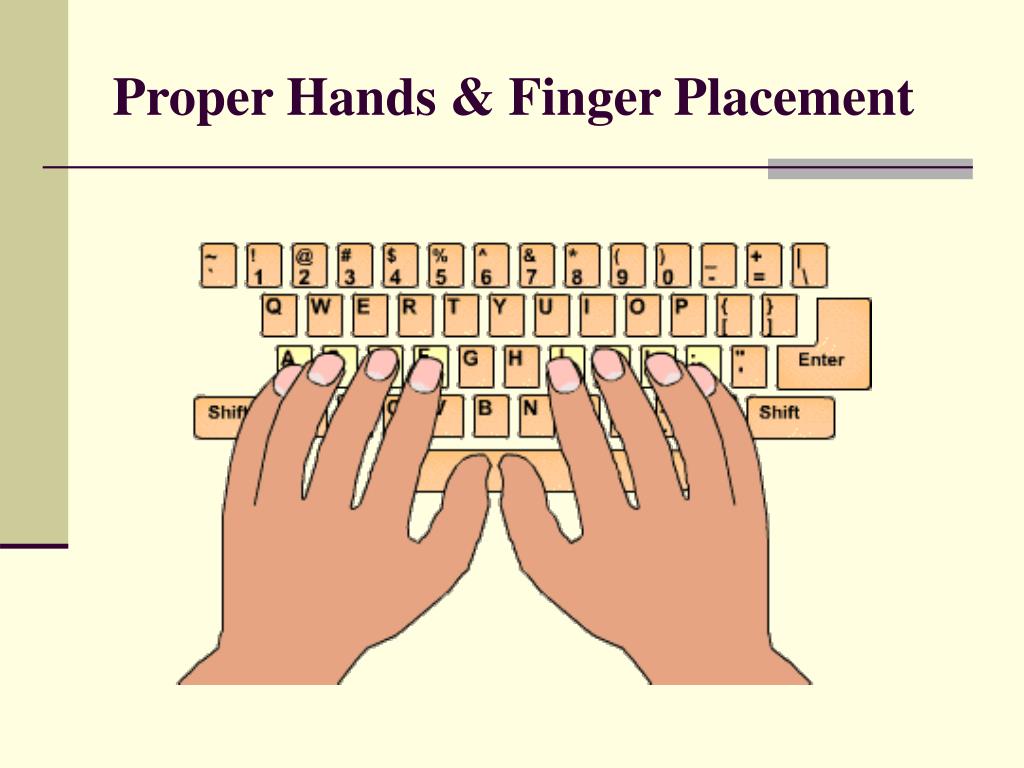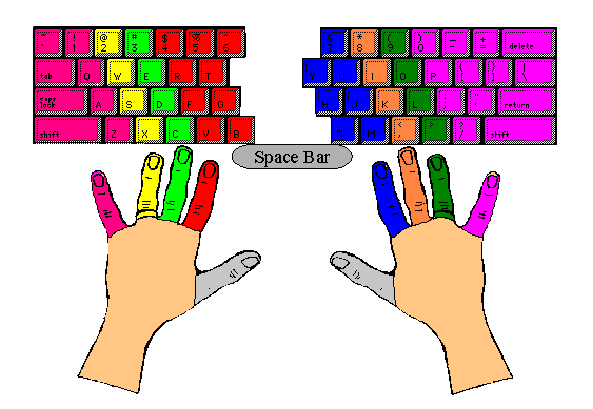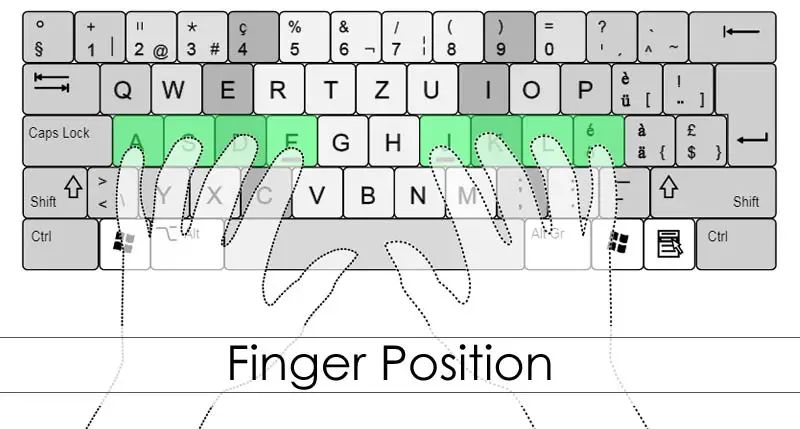

- #KEYBOARDING FINGER PLACEMENT HOW TO#
- #KEYBOARDING FINGER PLACEMENT PROFESSIONAL#
- #KEYBOARDING FINGER PLACEMENT FREE#

What Is The Proper Dosage Of Pyrantel Pamoate For Puppies? The key to your success when typing really is practice, so do as much of this as you can to perfect your technique. Poor hand use when typing results in a condition called repetitive strain injury (RSI) developing, which can be painful and restrictive over your ability to type fluently and with accuracy.

There are many typing tutorials online which list various activities for you to try that will get you typing using the correct hand position. Move your hands as appropriate to make reaching various keys easier for yourself and practice this to build up your confidence and speed. With your eight fingers and thumbs, be careful not to overstretch to reach a key and avoid excessive bending at the joint. In the correct typing position, your thumbs should share a role that is somewhat different to that of your other fingers: Pressing the space bar. Each zone is attributed to one finger: Starting with the little finger of the left hand all the way over to the little finger of the right. These zones are vertical columns which slope slightly to the right as they go across the entire keyboard.
#KEYBOARDING FINGER PLACEMENT HOW TO#
To make this easier for yourself when learning how to type properly, think of the keyboard in front of you as being sectioned off into color-coded zones. The most efficient of typists are able to use near enough every finger on a specific section of the keyboard. Similar to when playing piano, you need to use all of your fingers - not just the index finger of both hands. Another important thing to remember when perfecting your typing technique is to use your entire hand span to tap various keys. Pretty much every other alphanumeric key you'll need to use - be it on a desktop, laptop or notebook computer - will be easy to access with your hands resting on the home row, so it's important that you remember this basic technique. This is the standard position you should always start from because it's easy to reach all of the other keys on the keyboard from here, an area we call the 'home row'. If you can't type very quickly with your own typing technique right now, the learning effort is definitely worthwhile.The correct finger position for typing starts with hovering the hands above the home keys: 'A', 'S', 'D', 'J', 'K', 'L' and ':/ '. The time needed, which probably prevented you from learning to type with 10 fingers, can therefore be completely neglected in comparison to the possible long-term time saving. Depending on how fit you are on the keyboard at the moment, even a 3- to 4-fold increase in typing speed is possible - with correspondingly higher time savings. Of course, this is only an example calculation.
#KEYBOARDING FINGER PLACEMENT FREE#
For a working week of 40 hours, this means 4 1/2 weeks of free time per year, which you can use for other tasks or which at least allows you to go to work on time much more often. If you double your typing speed, you will save about 180 hours per year. Projected to one year, that is already 365 hours. Let's assume you spend an average of 1 hour a day entering texts. The time we spend every day entering texts on the computer may vary according to our profession and private usage patterns and may not seem so much to us - but the long-term approach is decisive here. And also privately we spend more and more time in the digital world.
#KEYBOARDING FINGER PLACEMENT PROFESSIONAL#
Nowadays, 2/3 of all professional activities require work on the computer. Who is our offer actually intended for? And is it worthwhile for you to invest the time and learn to type "the right way"?


 0 kommentar(er)
0 kommentar(er)
